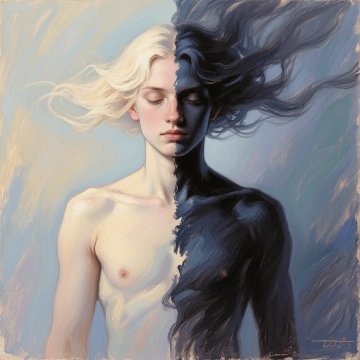Visual Arts Case Study
This case study was conducted by [YOUR NAME]. This research is an initiative under the organization [YOUR COMPANY NAME], designed to deepen the understanding and appreciation of visual arts through targeted studies into the formal qualities, thematic content, and symbolic meanings of artworks.
I. Introduction
This study aims to uncover the nuanced interplay between form, theme, and symbolism, enhancing both academic knowledge and public appreciation. The case study revolves around an in-depth analysis of selected pieces from various art periods and styles, providing a comprehensive understanding of their contextual relevance and inherent aesthetic value.
II. Objective
The objective of this case study is to explore and document the intricate layers of visual art interpretation and appreciation. By scrutinizing particular pieces of art closely.
III. Exploring Artistic Diversity
Artworks were selected based on their historical significance and diversity in style, medium, and cultural background to ensure a broad spectrum of analysis.
Each artwork was subjected to a vigorous interpretative method highlighting its formal elements, thematic messaging, and symbolic weight, ultimately fostering a richer engagement with the art piece.
IV. Artwork Selection
[ARTWORK NAME], created by [ARTIST NAME] in [YEAR], serves as a primary example within our case study. This piece, belonging to the [ART STYLE/MOVEMENT], is renowned for its innovative use of [MEDIUM] and thematic depth. The choice of this artwork provides an acute insight into the socio-political context of its creation, offering a foundational base for our interpretative study.
V. Background
The background of the artwork is crucial for understanding its impact and evolution in art history. Born in [ARTIST'S PLACE OF BIRTH], [ARTIST NAME] was influenced by [INFLUENCES], and their work was a response to [HISTORICAL EVENTS/CULTURAL MOVEMENTS]. This context is vital for our study as it shapes the thematic and symbolic interpretations discussed later.
VI. Formal Analysis
Formal Element | Description |
|---|
Composition | Description of the layout and spatial arrangement used in the artwork. |
Color | Examination of the color palette and its emotional or symbolic use. |
Texture | Analysis of the surface qualities and tactile effects. |
Line | Discussion on the types of lines used and their directional forces. |
Shape | Assessment of shapes, their boundaries, and interactions. |
VII. Thematic Interpretation
The artwork [ARTWORK NAME] illustrates themes such as [THEMES]. These themes are explored through their narrative structure, symbolism, and iconography, aligning with [CULTURAL/PHILOSOPHICAL CONTEXTS].
This section analyzes how the artist conveys deep sociocultural and personal messages through the visual medium, impacting the viewer's perception and emotional engagement.
This thematic interpretation is supported by scholarly opinions and historical texts, ensuring a robust understanding of the underlying messages intended by [ARTIST NAME]. Furthermore, these interpretations are compared with contemporary societal issues to gauge the artwork's relevance and timeless appeal.
VIII. Symbolic Meanings
Symbolism in [ARTWORK NAME] is both explicit and nuanced. Symbols such as [SYMBOLS USED] play a critical role in the narrative and thematic depth of the artwork. This section delves into how these symbols are integrated into the artwork and the multiplicity of meanings they convey to different audiences.
By decoding these symbols, this study illuminates the layers of meaning that often go unnoticed but are pivotal for a profound appreciation of the artwork. Scholarly interpretations and iconographic analysis assist in delineating these symbols' function and significance within the artwork and the broader art movement.
IX. Conclusion
In conclusion, this case study of [ARTWORK NAME] by [ARTIST NAME] provides a detailed exploration of the artwork through formal, thematic, and symbolic lenses.
The findings enhance our understanding of the visual arts and enrich the viewer’s experience and appreciation. The methodologies employed herein propose a framework that can be applied to future studies, potentially broadening the discourse around visual arts interpretation.
The insights gleaned from this research not only contribute to academic discourse but also encourage a deeper public engagement with the arts, fostering an appreciative community sensitive to the nuances of visual expression.
Prepared By:
[YOUR NAME]
[YOUR COMPANY NAME]
[DATE]
Case Study Templates @ Template.net






























